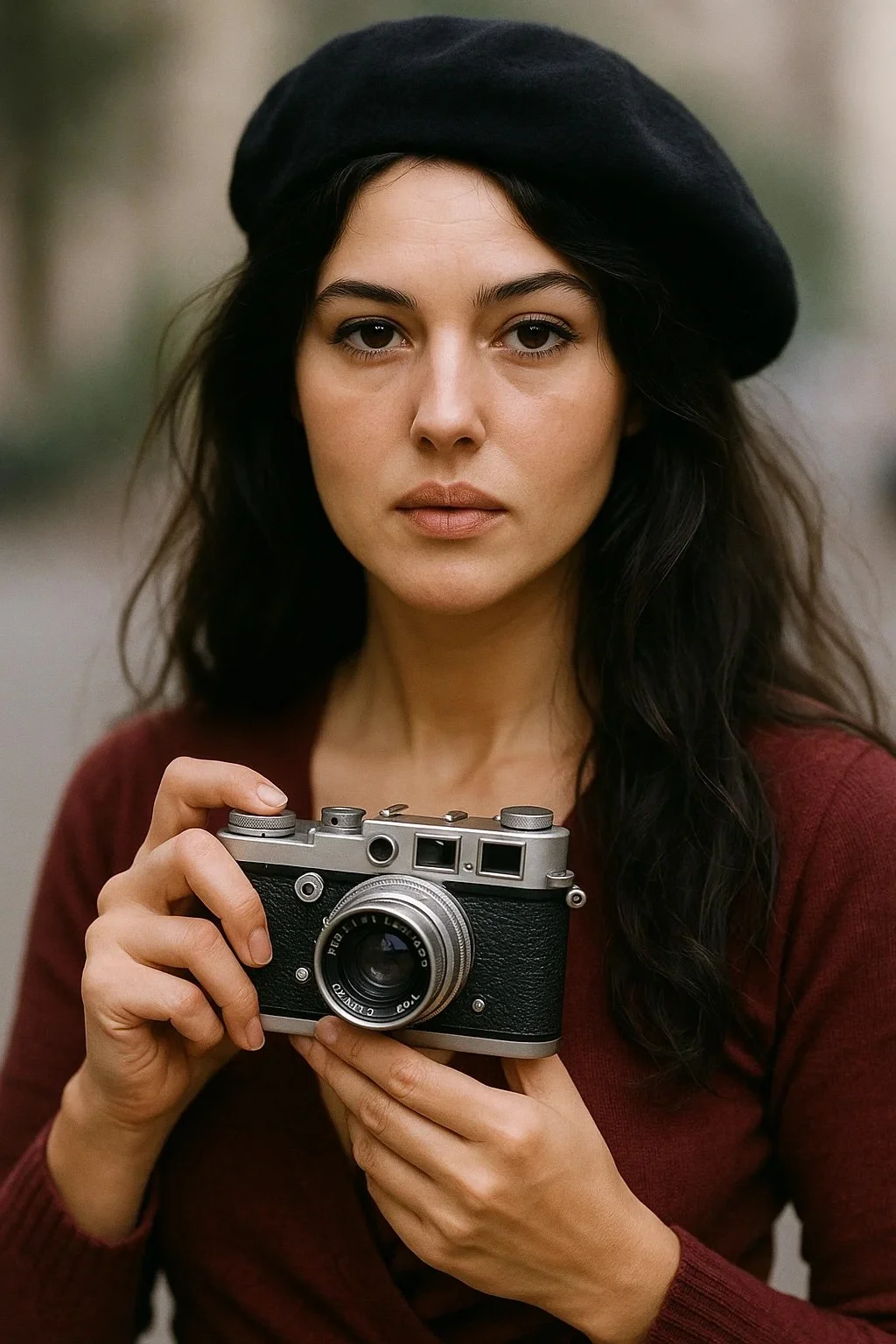The Enigma Behind the Lens
Born María Vega de Monteluna, La Maga was a renegade daughter of old Spanish nobility, said to have run barefoot from a finishing school in the Pyrenees with a Leica and a pack of tarot cards. By the time she surfaced in Swinging London in 1962, she was already myth — dressing like a Romany witch queen, photographing jazz funerals in New Orleans, riots in Algiers, and tantric rituals in Nepal.
When she met The Get Quick, she didn’t ask questions. She just started shooting.
“She saw us first,” Coco LeBree said in a rare interview, “before we even knew what we looked like.”
She shot in available light, with instinct and fire, capturing the nascent band in alleyways, backstage haze, and candlelit rehearsals. Her iconic photos — Mitch’s face half-shadowed behind a flickering drumstick, Erik lit only by a streetlamp through a demonic halo of fog, Coco dancing midair in double exposure — are foundational to The Get Quick mythos.
Her camera was said to have no shutter sound, just the faint pulse of breath.
Occult Aesthetic and Inner Circle
La Maga was no mere documentarian. She was constantly seeking to became a psychic conduit, part muse, part witness, part medium. Her darkroom was lined with sigils and bone charms, and she spoke of “capturing echoes rather than moments.” because “Eternity lived in the echos.”
She read palms before shoots. She claimed certain band members had “shifting auras” and required “chemical rebalancing” via herbs and colored filters. She once staged a shoot in a derelict church using mirrored obelisks and incense soaked in psilocybin.
Some say her photos don’t depict the band — they summon them.
Of course rumors of romantic entanglements between La Maga and every member of the band are plentiful, but none have ever been confirmed. She called them “my boys, my beasts, my beloved experiments.”
The Fire and the Fall
On the night of November 11th, 1969, a fire engulfed her London studio. She died trapped inside, surrounded by her life's work. The entire archive of her negatives and contact sheets — including never-before-seen photos of the recording rehearsals and touring rituals — was reduced to ash.
The official ruling was faulty wiring, but friends spoke of a growing paranoia in the weeks prior. She had told one associate, “There are pictures that shouldn’t be developed. They’re looking back now.” A neighbor reported seeing a suspicious “official-looking man” leaving the studio just before the fire started.
Some believe she took her own life after witnessing something in her images she couldn’t reconcile. Others say she was eliminated, either by the government, an occult order, or by the band itself — depending on which of the countless array of conspiracies you ascribe to.
The only photo recovered intact was a polaroid found an inner pocket of her Melton wool pea coat: a blurred image of Erjk Vanderwolf with one eye glowing, an aura of static around his head.
Legacy and Lost Works
Though most of her original work is gone, bootleg scans and magazine prints of her images are now traded like relics. Some collectors claim the images shift if left under a full moon. Her influence remains profound — you can see her fingerprints (sometimes literally) on every moody band shoot, every shadowy music video.
A hardback retrospective was announced by Phaidon in 2011 but mysteriously pulled just weeks before release. A copy of the catalog, titled “La Maga: Seeing Through Sound,” allegedly induces temporary madness in readers by the final chapter — followed by lifelong devotion.
La Maga lives on.
— Mark Question, 2011
